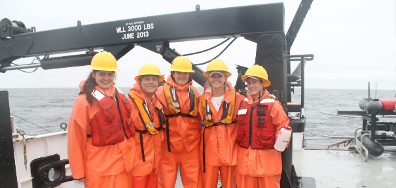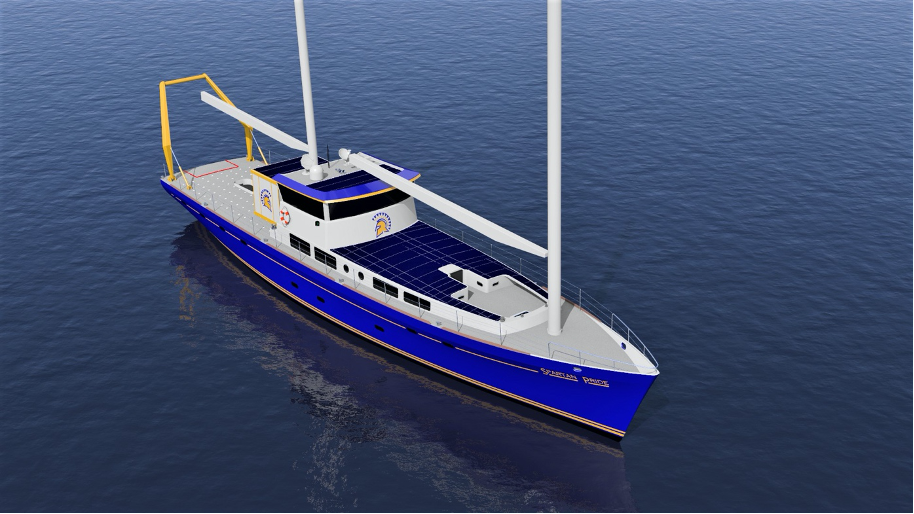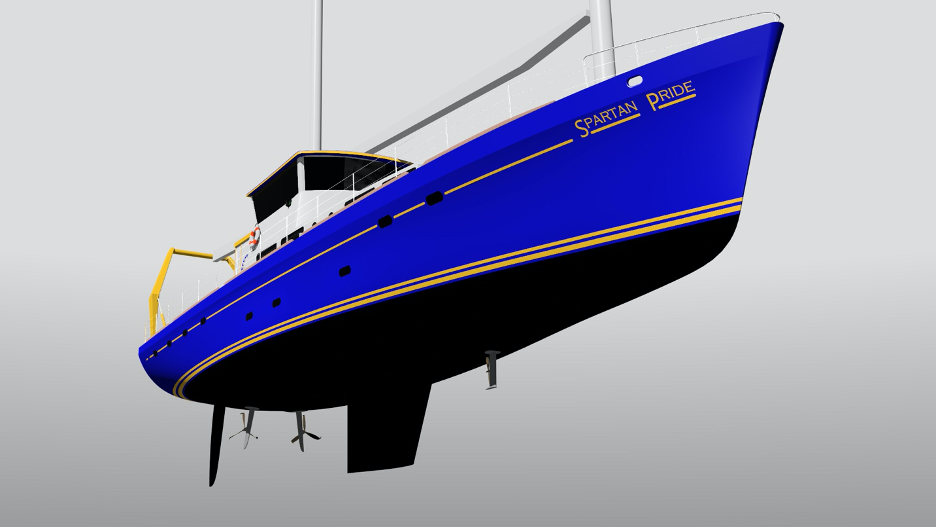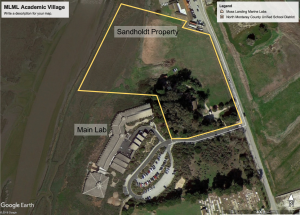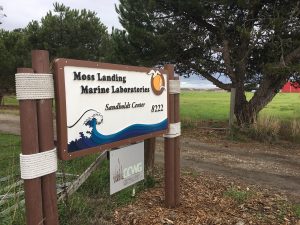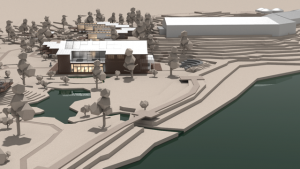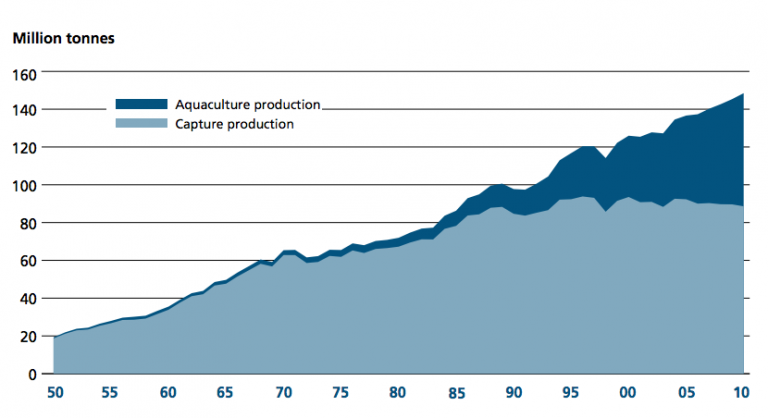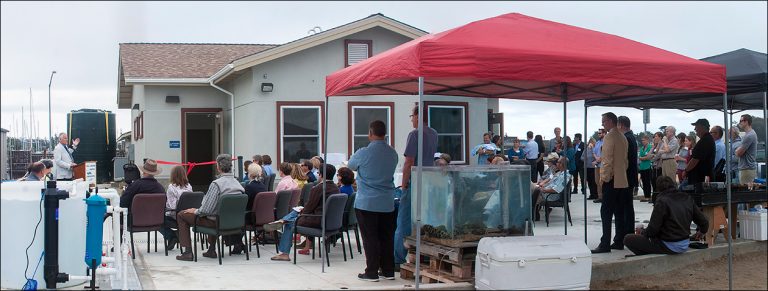For nearly sixty years, Moss Landing Marine Laboratories and the San José State University Research Foundation have operated Research Vessels owned by the university and the National Science Foundation. These ships and boats not only afforded our students the experiences of ship-board research activities during class cruises, but also offered invaluable collaborations at sea for our faculty researchers and students with ocean scientists from around the world. Since the sale of the R/V Point Sur to the University of Southern Mississippi in 2015, MLML has been searching for a replacement.
Today, San José State University and Moss Landing Marine Labs, in partnership with Ocean Planet Explorers (OPE), are designing and planning to build a purpose-built research vessel for the 21st Century, the OPE 111. This sail assisted, hybrid-electric propelled 111 feet boat is large enough to carry more than forty students for a class cruise in Monterey Bay and sixteen scientists for multi-day expeditions, but small enough to be operated by a limited crew.
Specifications:
LOA - 111’5”
LWL - 98’4”
Beam - 22’5”
Draft - 12’4”
Air Draft - 125’
Work Deck - 885 sq ft
Dry Labs - 920 sq ft
Complement Day Trips - 50
Complement, over 12 hrs. - 16
Displacement - 200,000Lbs
Gross Tonnage (Regulatory) - 78
Top Speed, Power - 15 Kts
Top Speed, Sail - 22 Kts
Endurance - Trans Oceanic
Dynamic Positioning - Enabled
A-Frame - 10,000 Lbs SWL
Mizzen Boom - 10,000Lbs SWL
Sail Control - Electric/Hydraulic
This vessel, designed by Tom Wylie, is a paradigm shift from the “traditional” research vessel design. The OPE 111 utilizes wind power, not only for direct propulsion, but also power regeneration by dragging one or more propellers to recharge lithium batteries. Photo-voltaic cells are incorporated into the top decks to recharge batteries for the hotel loads (i.e. electrical needs in excess of that needed for propulsion such as lighting, ventilation, auxiliary equipment, and science equipment). This design not only greatly reduces carbon emissions but also allows the ship to operate silently for hours at a time using only electricity for propulsion and other power needs. This is especially important due to the increase in noise pollution in our oceans, and it allows researchers to perform delicate acoustic experiments without having to filter out engine noise. Modular construction allows future technologies to be easily incorporated into a vessel designed to last for decades.
We envision that this vessel, besides training the next generation of marine scientists, will be used to examine the most pressing issues facing our oceans, including climate change, ocean acidification, harmful algal blooms, micro plastics and other pollutants, and the health of marine protected areas. The vessel will operate off California, but will able to conduct important research worldwide.
The vessel will be outfitted with state-of-the-art data collection, instrumentation, and sampling equipment such as multi-frequency bio-mass acoustic systems, bottom and water column mapping systems, acoustic doppler current profilers, and a CTD water sampling and profiling system that can measure water temperature, salinity, dissolved oxygen, pH, bioluminence, and other parameters throughout the water column.
This new style of research vessel will serve many purposes, including class cruises, day research trips, and longer duration research voyages. Classes from MLML, CSU campuses, and other local academic programs (e.g. UCSC, Hopkins/Stanford, Naval Postgraduate School, and community colleges) will be able to take out up to 40 students for oceanographic and biological sampling, and observations of marine mammals and sea birds. The vessel will have the capability of moving up and down the west coast of North America so students from many locations will be able to have access to the sea. Research groups will be able to use the vessel operating out of various ports in central California (e.g. Moss Landing, Monterey, San Francisco, Half Moon Bay, etc.) to conduct coastal sampling programs that study formation of harmful algal blooms, distribution and abundance of plankton and nekton, condition of marine protected areas, physical factors affecting nearshore processes, and many more important topics of interest to California. And this vessel, with its unique and diverse propulsion capabilities, can undertake extended trips around the world to study important aspects of marine science worldwide.
With help from University Advancement at San José State University, Ocean Planet Explorers AND MLML/SJSU hope to secure private funding (and possibly some State funding) for this vessel and lay the keel in 2022 with launch, commissioning, and donation to SJSU/MLML in 2023. If you are interest in supporting this exciting endeavor please contact Emily Lane (emily.j.lane@sjsu.edu) the Director of Development for the SJSU College of Science and MLML.
If you want more information about the design features and this project in general, please contact:



